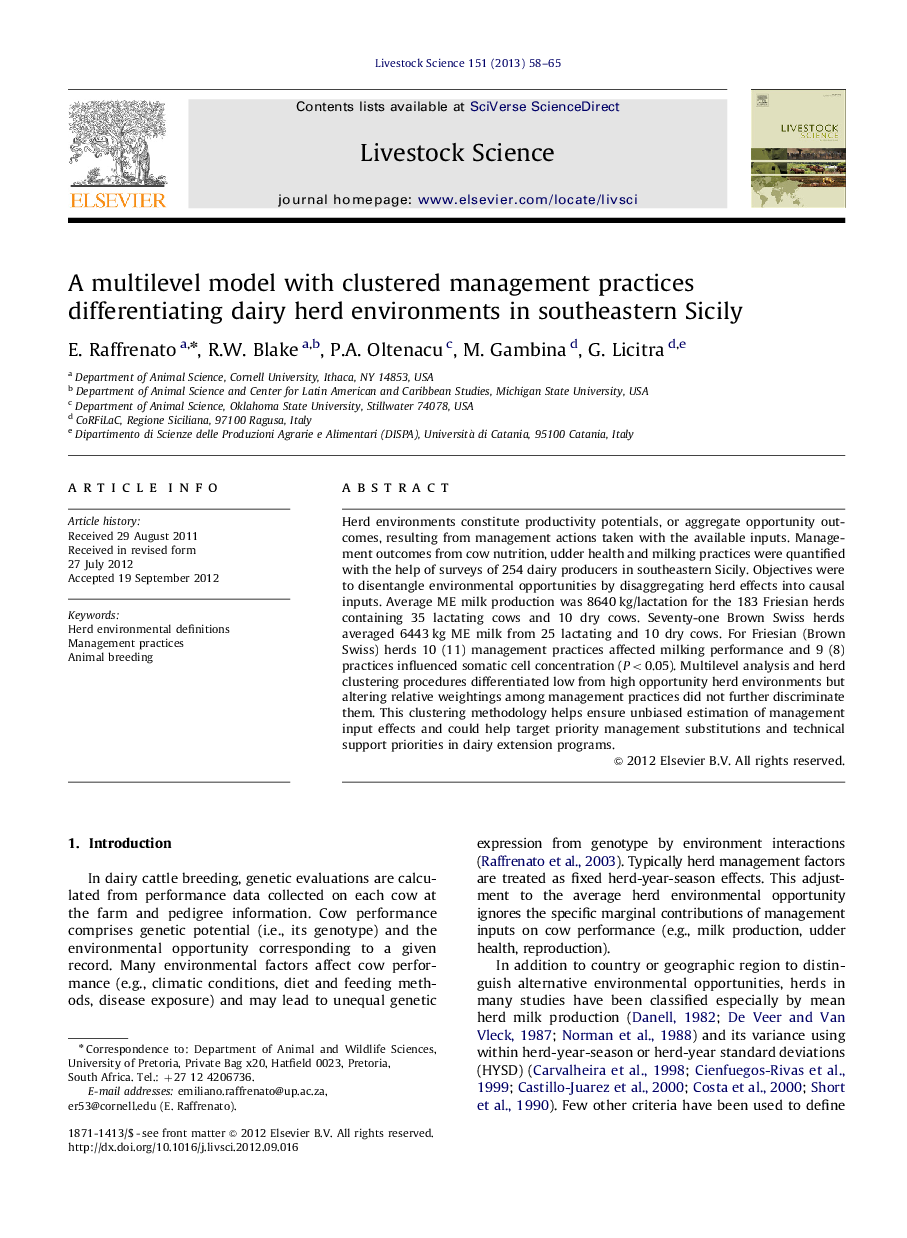| Article ID | Journal | Published Year | Pages | File Type |
|---|---|---|---|---|
| 5790395 | Livestock Science | 2013 | 8 Pages |
Abstract
Herd environments constitute productivity potentials, or aggregate opportunity outcomes, resulting from management actions taken with the available inputs. Management outcomes from cow nutrition, udder health and milking practices were quantified with the help of surveys of 254 dairy producers in southeastern Sicily. Objectives were to disentangle environmental opportunities by disaggregating herd effects into causal inputs. Average ME milk production was 8640Â kg/lactation for the 183 Friesian herds containing 35 lactating cows and 10 dry cows. Seventy-one Brown Swiss herds averaged 6443Â kg ME milk from 25 lactating and 10 dry cows. For Friesian (Brown Swiss) herds 10 (11) management practices affected milking performance and 9 (8) practices influenced somatic cell concentration (P<0.05). Multilevel analysis and herd clustering procedures differentiated low from high opportunity herd environments but altering relative weightings among management practices did not further discriminate them. This clustering methodology helps ensure unbiased estimation of management input effects and could help target priority management substitutions and technical support priorities in dairy extension programs.
Keywords
Related Topics
Life Sciences
Agricultural and Biological Sciences
Animal Science and Zoology
Authors
E. Raffrenato, R.W. Blake, P.A. Oltenacu, M. Gambina, G. Licitra,
